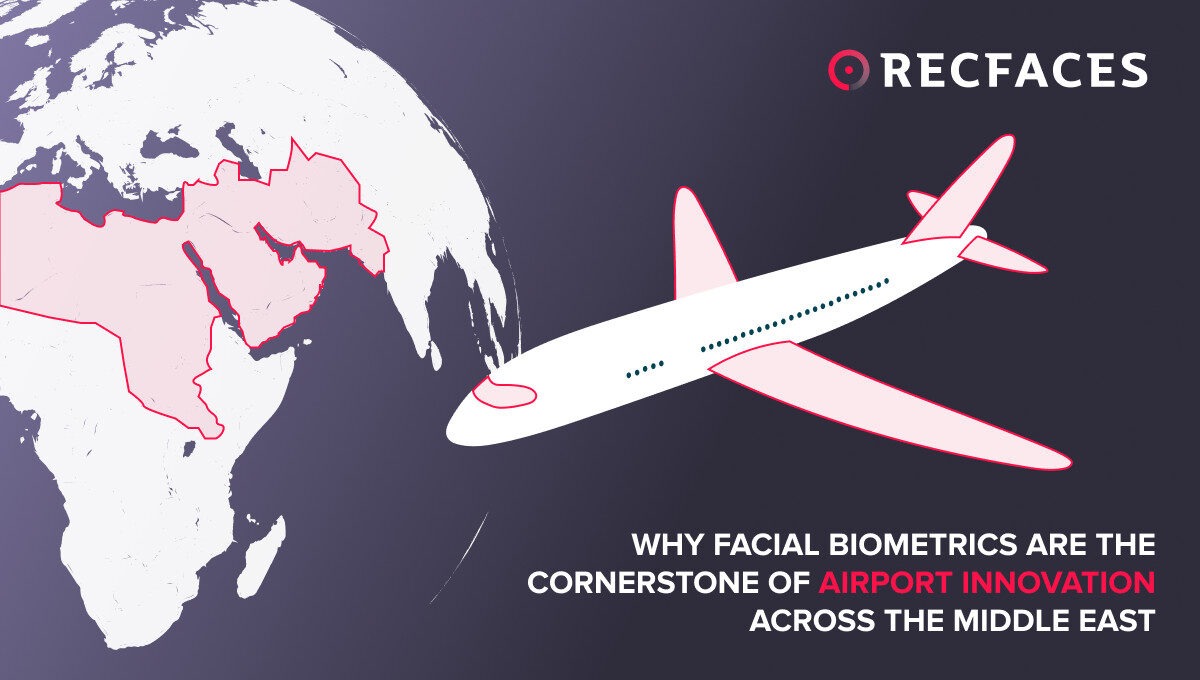Why Facial Biometrics Are the Cornerstone of Airport Innovation Across the Middle East

Once viewed as refueling outposts between continents, MENA airports are today iconic landmarks of national pride and innovation. With some of the world’s most luxurious passenger services, from onboard spas to private suites and Michelin-starred cuisine, the region has set the gold standard in hospitality. And right now, these same airports are starting a new chapter in global aviation. At the heart of this transformation lies facial biometric technology — seamlessly blending security, efficiency, and personalization into a single scan.
The momentum is undeniable. According to the Amadeus’ Travel Technology Investment Trends 2024 conducted, 56% of airport leaders are prioritizing technology investments to enhance customer experience, while 52% are focused on improving operational efficiency. What’s more, 94% of airports plan at least “moderate” investment in digital transformation this year — 44% with “aggressive” intent.
In a region where ambition is measured in billions and strategy in decades, biometric technologies offer more than just convenience — they’re becoming a strategic imperative for resilience, growth, and regional leadership. Welcome to the era where facial recognition isn’t a feature — it’s the foundation of the future airport.
Why Facial Biometrics Now?
Biometric technology is rapidly transforming the way passengers interact with airport infrastructure. Already, nearly all airports surveyed by Amadeus have implemented or plan to implement biometric touchpoints at key stages such as check-in, bag drop, security screening, lounge access, and boarding. Facial recognition, in particular, offers a secure, convenient and contactless solution that enhances throughput and personalizes the travel journey.
What do the numbers say? The current global airport technologies market is projected to reach USD 13.99 billion in 2025. The airport digitization market alone, which includes facial biometric systems, is forecast to skyrocket, hitting USD 27.44 billion by 2030. This wave of investment is aligned with broader goals: sustainability, cybersecurity, passenger experience, and efficiency.
“Airports are increasingly integrating facial biometrics with AI-based screening, self-service kiosks, mobile apps, computerized gates, and low-energy systems, creating a seamless, green, and intelligent ecosystem. These technologies not only optimize resource use and reduce wait times, but also ensure a heightened standard of security — an indispensable advantage in today’s complex geopolitical and operational climate”, says Mohammed Bajarsh, VP of Products, RecFaces.
Middle East: From Transit Hubs to Global Gateways
Forty years ago, MENA airports were peripheral players in global aviation. They served as refueling stops — offering cheap fuel and basic services to aircraft in transit. But that narrative has dramatically changed. Today, the region boasts some of the world’s most advanced and connected hubs, catering to millions of travelers and acting as bridges between East and West.
In 2000, the Middle East ranked seventh in global seat capacity with just 70 million seats per year. By 2024, that number has shot up to 257 million — within touching distance of the booming South Asian market. This extraordinary growth has been fueled by ambitious investments, strategic planning, and a relentless pursuit of excellence in service delivery.
According to the Airports Council International (ACI), Middle East airports are expected to handle 1.1 billion passengers by 2040 – a significant increase of nearly 300% of the combined traffic they handled in 2019 (405 million). To meet this demand, the region is poised to invest up to USD 151 billion in airport expansions, facility upgrades, and advanced technologies — many of which rely heavily on biometric innovations.
MENA Airports Leading with Innovation
Several airports in the region are setting benchmarks for digital transformation:
- Hamad International Airport (Doha) adopted digital twin technology to allow real-time monitoring of terminal operations in 2022. This enables more informed, faster decision-making, resulting in smoother passenger flows and more efficient resource allocation — enhancing both service and safety.
- Dubai Airports is preparing to implement a next-generation air traffic control system at Dubai International Airport and Al Maktoum International Airport alike. This AI-assisted solution will improve departure sequencing and reduce workload pressures on ATC personnel.
- King Salman International Airport (Riyadh), designed to be one of the world’s largest, aims to handle up to 120 million passengers annually by 2030. Aligned with Saudi Arabia’s Vision 2030, the airport will integrate robotics and AI from day one, offering a digital-first passenger experience built on biometric foundations.
These case studies signal a wider movement: MENA airports are not just catching up with global trends — they are defining them.
The Saudi Vision 2030 Effect: Driving Regional Competition and Innovation
Saudi Arabia’s Vision 2030 is emerging as a major catalyst in reshaping the MENA aviation sector. As part of a broader effort to diversify the Kingdom’s economy and reduce its reliance on oil, the initiative places significant emphasis on infrastructure, tourism, and digital transformation — with aviation at the center of its ambitions.
Vision 2030 sets out to generate over 1 million new jobs and drive tourism to account for more than 10% of GDP. One of its most ambitious goals is to handle 300 million passengers annually by 2030 — up from 107 million in 2023 — with at least 100 million of those being tourists. A staggering USD 3.3 trillion has been earmarked for this national transformation.
This bold expansion is elevating the competitive bar across the MENA region. Neighboring countries are responding with their own investments in infrastructure and passenger experience to maintain market share and regional relevance. As a result, a new era of innovation and service excellence is taking shape across the region, driven by a mix of competition and shared ambition.
Vision 2030 is not just transforming Saudi Arabia’s aviation ecosystem — it is encouraging airports throughout the Middle East to accelerate digital transformation, reimagine operational models, and adopt future-ready technologies. In doing so, it is creating a more dynamic and interconnected regional aviation landscape, with biometrics playing a central role.
The Path Forward: Strategic Recommendations for MENA Airport Leaders
As technology continues to reshape the global aviation landscape, MENA airports have a unique window of opportunity to lead the next wave of innovation. To maximize the value of biometric solutions, airport executives should consider the following strategic imperatives:
- Adopt an Integrated Biometric Strategy: From curb to gate, facial recognition must be embedded into every stage of the passenger journey. Investments should be made not just in hardware but also in cloud-based identity management systems and AI-powered analytics.
- Collaborate Across Stakeholders: Government, airline, and security stakeholders must align on data governance, privacy protocols, and system interoperability. Biometric systems should seamlessly link with immigration, customs, and airline check-in platforms.
- Focus on Passenger Trust: As with any data-driven innovation, public trust is crucial. Clear communication around data usage, privacy safeguards, and the benefits of biometric travel is essential.
- Expand VIP and Personalized Services: In a region known for opulence, airports should push beyond standardization to offer ultra-personalized experiences for high-end travelers. This includes biometric access to exclusive lounges, personalized loyalty rewards, and bespoke in-terminal services — all activated by facial recognition. For the region’s affluent clientele, trust, privacy, and individualized attention will be key drivers in brand loyalty.
- Leverage Data for Operational Efficiency: Facial biometrics not only streamline passenger movement but also generate valuable operational data. Analyzing this data can reveal bottlenecks, optimize resource allocation, and inform long-term planning.
Conclusion: Biometrics as a Catalyst for Aviation Excellence
Facial biometrics are redefining the operational and strategic look of MENA airports. In a region characterized by visionary ambition, high passenger growth, and rising traveler expectations, embracing advanced biometric systems is not just a technological upgrade — it’s a strategic opportunity to attract global airline partnerships and position MENA airports as leading hubs for personalized, passenger-centric travel.
In the race toward smarter, safer, and more seamless travel, MENA’s biometric future has already begun. And for those willing to lead it, the runway to global aviation leadership is wide open.







